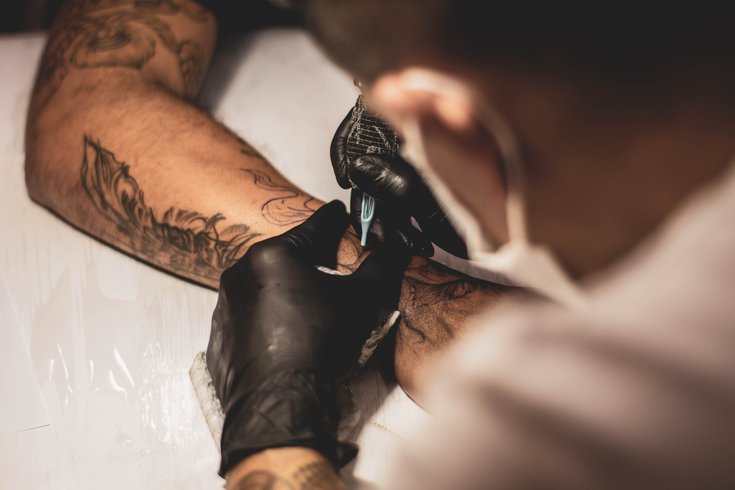
July 26, 2023
 Lucas Lenzi/Unsplash.com
Lucas Lenzi/Unsplash.com
Smart tattoos are being developed with functional materials that respond to changes in vital signs. They could be the next step in the evolution of real-time health tracking.
Wearable devices and smartphone apps have contributed to major breakthroughs in how we monitor health metrics — it's now possible to keep tabs on glucose levels, record sleep patterns and track the heart. But in the search for increasingly efficient ways to deliver real-time health data, researchers are developing tattoos that use skin as a canvas to display vital signs.
Body art is an ancient practice in self-expression and group identification. Historically, tattoos were applied using various natural materials — soot, charcoal, breast milk and plants — with primitive tools like bones and sticks to puncture the skin. The popularity of tattoos grew with the emergence of electric devices in the late 19th century, which enabled artists to effectively use needles and ink with precision.
Scientists, engineers and designers are reimagining how tattoos can be used to monitor health. They've turned to "functional materials" that can be applied to the skin and will respond to internal and external stimuli. For example, a smart tattoo might change color when blood sugar levels reach a certain threshold, reminding people with diabetes to take insulin, or track kidney and liver function or hydration.
One of the world's leading smart tattoo researchers is Ali Yetisen, a chemical engineer at Imperial College London. Yetisen helped develop DermalAbyss, a smart tattoo that trades traditional ink for a substance that contains biosensors. The tattoos change color in response to fluctuations in bodily fluids, and each biosensor delivers continuous feedback on pH levels, sodium and glucose.
To date, the technology has been tested on pigs and will undergo human clinical trials in the coming years.
“We hope that these innovative technologies will be a general platform in order to utilize diagnostic technologies,” Yetisen told CNN.
Another research lab in the U.S. is focused on developing a small, light sensitive tattoo called the "solar freckle," an invisible mark that becomes apparent when exposed to certain levels of UV light. The idea is to signal when a person has had prolonged sun exposure and needs to apply sunscreen or seek shade, potentially preventing skin cancer.
Other possible applications for invisible smart tattoos include pinpoint marks for cancer patients undergoing radiation treatment. When exposed to UV light, these marks could focus radiation beams and spare cancer survivors from permanent, visible dots that remind them of their illnesses.
"We are making functional microscopic implants that go in the (skin) and confer some functional or health benefits," said Carson Bruns, an artist and nanomaterials professor at the University of Colorado Boulder. Earlier this year, Bruns received a National Science Foundation CAREER Award with funds to support further development of smart tattoos. His own tattoos inspired him to innovate with the premise that body art can be both fashionable and functional.
Some health experts believe smart tattoos will offer a leap in capability compared to wearable devices, which require charging and can expose sensitive health information to hackers. It's also thought that smart tattoos could be used temporarily, helping skeptics overcome ingrained reluctance.
Smart tattoos are still early in their evolution and will need to clear safety hurdles in the years ahead. But their emergence could be at the forefront of a future crossover between health technology and self-expression that empowers people to add functionality to their body art.